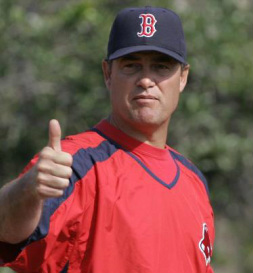 John Farrell is coming back to Boston. After on-going rumors of John Farrell making a return to Beantown, it’s finally a done deal. The former Sox pitching coach has agreed to a 4 year contract to manage at Fenway Park. Since his contract with the Toronto Blue Jays is expiring next offseason, the Jays received shortstop Mike Aviles as compensation from Boston. Farrell led the Blue Jays to a subpar 154-170 mark in his two seasons north of the border. They also finished 8 games worse in 2012 than in 2011. The Blue Jays willingness to negotiate with Boston signals they are ready to move on without Farrell being a part of their future plans. Also, Farrell’s inclination to speak directly with Ben Cherington and the Red Sox about the position showed his desire to return to Boston. It seems like a good fit, as Farrell has a great relationship with Ben Cheringtion after having a shaky partnership with Alex Anthopoulos. Farrell had a history of being in disagreement with the Toronto GM with some of his roster moves. Farrell was pushing to release veteran infielder Omar Vizquel in July and the Jays disagreed and kept him. Farrell also called for help in the starting rotation and instead the Jays got bullpen help at the trade deadline. These incidents did not escalate enough to receive the kind of attention and scrutiny Bobby Valentine faced in Boston. Valentine had problems throughout the year with his players and the media which made it inevitable that he would be out as manager. Comparing Farrell and Valentine’s managerial style, the Red Sox are receiving a more aggressive manager, with Farrell’s Jays attempting 164 stolen bases compared to the Red Sox’ 128 in 2012. However, they both sacrificed almost the same amount of time with Farrell bunting 33 times compared to Valentine’s 34. It is clear the glaring problem on Yawkey Way is the pitching staff. As a staff, Red Sox pitchers posted the third worst ERA in the American League (4.72) in 2012. Leaders of the staff such as Josh Beckett, Jon Lester and Clay Buchholz also fell apart in 2012. With Beckett now in Los Angeles, Lester and Buchholz look to anchor the rotation yet again as they attempt to return to front-line starters. Farrell is the optimal guy for Boston as he led his pitchers to great success during his time as pitching coach. From 2007-2010 (Farrell era), Red Sox pitchers led the American League in strikeouts, opponent batting average, and shutouts. They also ranked third in ERA during Farrell’s 4 year stint (4.11). It may be coincidental, but Jon Lester is a perfect example of a guy who just seemed more comfortable with Farrell’s presence. After winning the clinching game of the 2007 World Series in Colorado, Lester went on to post an ERA+ of 144, 136 and 134 from 2008-2010 under Farrell. At this point, Jon entered 2011 at age 26, so it would make sense to expect similar results if not much better results. However, after a nice start to 2011, Lester completely fell apart in September (the worst and most painful month in Red Sox history I might add) and has not been the same since. He posted an ERA+ of 124 in 2011 and 90 in 2012. 90! Red Sox fans hope Farrell can help him become more comfortable again and aid him in regaining his confidence. John is also liked around Boston because he coached under Terry Francona, who led the Red Sox to 5 postseason appearances and 2 World Series titles in his 8 year reign. The other part of this deal that hasn’t received much attention is Mike Aviles. The Jays are getting an average hitter (.277 career BA) who broke out in terms of power in 2012 with a career high 13 home runs. However, the knock on Aviles is his lack of plate discipline. He walked just 23 times in 546 plate appearances in 2012 and had a sub-.300 on-base percentage. This also opens up a hole a shortstop for Boston. The options they now have internally are Jose Iglesias and Pedro Ciriaco. Iglesias, a magician with the glove, hasn’t shown any signs of hitting at the big league level (career .135/.210/.413 slash line). Ciriaco hit for a nice average in 2012 (.293) although he plummeted towards the end of the year. His .352 BABIP may have had something to do with that, along with swinging at a ton of pitches out of the zone. He walked just 2.9% of the time he stepped up to the plate. For now, all signs point to Iglesias being the front runner as Boston's starting shortstop. First Impressions: Winners: Red Sox and Blue Jays The Red Sox were able to grab the guy they had an eye on for 2 years now. He is very well respected in Boston by players, management and fans as he enjoyed success as the pitching coach from 2007-2010. Also, the Sox only had to give up shortstop Mike Aviles. This is a position where the Red Sox have other options for going forward. The Blue Jays were able to get rid of a manager who had not had success and caused a few minor problems with management. At the same time, they received a solid infielder in Aviles. The Blue Jays, after coming off a tough season, can now start fresh with a new manager and perhaps change the atmosphere just like Boston is trying to do.
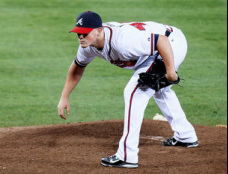 Is the "save" what it used to be? Nasty does not begin to describe the stuff Aroldis Chapman and Craig Kimbrel possess. The two young fireballers have turned into two of the most dominant relief pitchers in all of baseball. Notice I said “relief” pitchers, not closers. Although technically they are perceived as closers, they should not be used in the ninth inning exclusively to “close” out games. Kimbrel is leading the National League in strikeouts per nine innings (K/9), while Chapman is right behind him at 16.35 K/9 and 15.60 K/9 respectively. So, if your team has a one run lead in the 7th inning with the bases loaded and 1 out, why would a manager not go to his best strikeout guy? This is because of the save statistic and the fact that closers are defined by how many saves they can record. Nowadays, you see a closer, someone who is generally regarded as the team’s best reliever, come into a game more often when the team has a 3 run lead at the start of the ninth inning. The amount of pressure in these situations is drastically different. One way to measure different pressure situations is with leverage index. Leverage index determines the weight of a particular situation due to the inning, score, and outs present at the time. This simplifies pressure-packed or pressure absent at a certain point during the game. For example, the leverage index for a reliever coming in the bottom of the ninth with nobody on and nobody out with a three run lead is 1.0, or in other words, a low leverage situation. On the other hand, a bases loaded, down two, nobody out scenario in the 7th assigns a high leverage number of 4.1. "Firemen" like Chapman and Kimbrel should be used when the pressure is at its highest point in the game. Yes, more often than not, this situation arises before the ninth inning, often representing the turning point of a ball game. However, some teams have done a better job of maximizing their pitcher's ability in pitching higher leverage circumstances. Guys like Fernando Rodney of Tampa Bay and Jim Johnson of Baltimore have emerged as the game’s best relievers and have become poster children for pitching with increased pressure. For example, Johnson leads the league in games entered with high leverage present (leverage index greater than 1.5). On the other hand, Rodney leads all relievers in situational wins saved, a computation of win probability added divided by the leverage index or pressure at a given time. Also, both pitchers rank in the top ten in terms of pitching with high leverage index. In other words, they have pitched the most in pressured packed situations. By maximizing a pitcher's ability and bringing him when the "fire" is its hottest, teams are better able to preserve and secure victories. Again, it is not a coincidence that these teams are either in the playoffs or were in contention until the last week of the season (Tampa Bay). Clearly, pitchers that can come in and shutdown a rally or strikeout somebody out when necessary is crucial to any team’s success. A shutdown or meltdown would be a better way to look at a reliever’s success rather than just look at the save statistic. Shutdowns and meltdowns offer an alternative to the save statistic by simply analyzing whether a pitcher helped or hurt his teams' chances of winning. If a pitcher improved his team's chances of winning by at least 6%, he gets a shutdown. If he hurts his team's chances by 6% or more, then he is awarded a meltdown. This has no silly rules (rule 10.19) to follow and treats all relief pitchers equally (instead of favoring closers like the save statistic implies). Not surprisingly, the aforementioned “closers” have some of the best shutdown ratios in the league (Kimbrel: 37 SD, 4 MD, Chapman: 41 SD, 6 MD, Johnson: 46 SD, 3 MD, Rodney: 34 SD, 2 MD). Yet, even with these excellent numbers, it does not necessarily mean that pitchers are capitalizing on their talent. Would you rather have a middle relief journeyman pitching in a high leverage situation, or a talented flamethrower capable of getting a much needed strikeout? I think the answer is quite obvious and just further illustrates why the current status quo must be changed.
Nick Rabasco: NL Wild Card: Braves over Cardinals
AL Wild Card: Orioles over Rangers
NL Divison Series: Giants over Reds
Nationals over Braves
AL Division Series: Tigers over A's
Orioles over Yankees
NL Championship Series: Nationals over Giants
AL Championship Series: Tigers over Orioles
World Series: Tigers over Nationals
2012 World Champion: Detroit Tigers
Aidan Flynn: NL Wild Card: Cardinals over Braves
AL Wild Card: Rangers over Orioles
NL Division Series: Reds over Giants
Cardinals over Nationals
AL Division Series: Rangers over Yankees
Tigers over A's
NL Championship Series: Reds over Cardinals
AL Championship Series: Rangers over Tigers
World Series: Reds over Rangers
2012 World Champion: Cincinnati Reds
9/23/12: Jon Lester's 14 game winning streak against the Baltimore Orioles was snapped at Fenway Park in a 4-2 Saturday afternoon. This streak was tied for the longest in O's history with the everlasting and seemingly indestructible Jamie Moyer.
9/24/12: Yesterday, Adrian Gonzalez hit his second home run since being acquired in the August mega-trade with the Boston Red Sox, with 105 plate appearances separating each round tripper. However, later in the game he hit his second of the day and his third in Dodger Blue. His second and third Dodger homers were separated only by 1 plate appearance.
9/25/12: Justin Verlander has a career 15-2 record against the Kansas City Royals and is the reigning American League Cy Young and MVP winner. However, one member of the Royals, Nebraska product Alex Gordon, has four extra base hits off the Detroit ace this season including a home run yesterday. This ties for the most extra-base hits by any player against Verlander the last five seasons.
9/26/12: After Chipper Jones and his 2,724 hits and 468 home runs with one organization, the next highest totals from a number one overall pick who only played with the team by which he was drafted are from 1979Seattle Mariner draftee Al Chambers. Chambers only had 25 hits and two home runs.
9/27/12: On Thursday, R.A. Dickey became the first pitcher to win 20 games while playing on a sub .500 team since 1997. Then 34 year old Roger Clemens accomplished the feat for the 76-86 Toronto Blue Jays, a season in which Clemens also captured his fourth Cy Young.
9/28/12: On Friday, A.J. Griffin earned the victory for the Athletics over the Mariners. This marked the 50th win recorded by rookie pitchers for the A's this year, making it only the third occurrence in the past 100 years. The rookie win record as a team stands at 51 for the 1952 Brooklyn Dodgers.
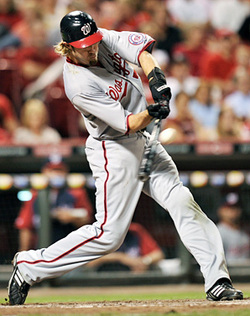 Jayson Werth is currently in the second year of his 7 year $126 million mega-deal with the Washington Nationals. After a dismal first season and not coming close to living up to his contract, Werth has quietly had a revival of sorts in 2012. He received lots of media attention in 2011 for his poor play, even as the Nationals finished a respectable 80-81. In 2012 however, Washington has taken off and transformed into perhaps the best all-around team in the National League. Werth was a non-factor in the first half of the campaign due to a DL stint, as young phenoms Stephen Strasburg and Bryce Harper received all the attention. The two young studs were accompanied by former all-star Ryan Zimmerman, the emergence of guys like Adam LaRoche and Ian Desmond, and a phenomenal pitching staff all the way around.
Since coming off the DL, Jayson Werth has played in 74 games and has made major contributions out of the leadoff spot; a spot that lacked production in the first half for D.C. The Nationals right-fielder has posted a tremendous .390 OBP and has been able to get the offense rolling. Werth has also very impressively only struck out in 16.6% of his plate appearances in 2012, a statistic well below his career average of 24.1%. Werth, a 6 foot 5 inch right-handed hitter, may not appear to be a conventional leadoff hitter, but when you find a guy who leads his team in OBP and doesn’t strike out as often, he is a perfect fit for the spot. Although his home run percentage is down in 2012 (1.6%) from his career mark (3.7%), Werth still has the ability to pop one every once in a while. Werth possesses above average speed as well, swiping 8 bags in 10 attempts in limited time in 2012.
In my mind, Jayson Werth is the key for the Nationals as they make their first Postseason appearance since 1933. Just getting on base, as he has been doing, is all the Nationals need from him with the likes of Bryce Harper, Ryan Zimmerman, Adam LaRoche, and Ian Desmond hitting behind him. Another attribute Werth brings is plenty of postseason experience, as he won a ring in 2008 while in the City of Brotherly Love. There is no question Washington is an extremely talented ball club headed into October (yes, even with Stephan Strasburg being shutdown), but they are young. Werth should be able to instill confidence and relax his teammates as most of them experience the thrill of being in the postseason for the first time.
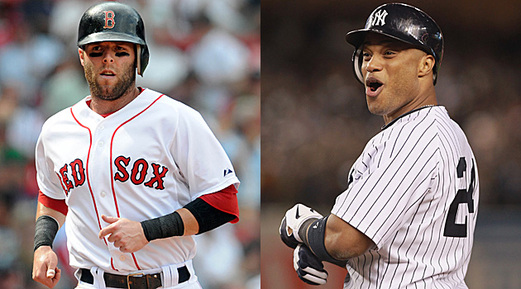 Although Robinson Cano may be having the better season, does Dustin Pedroia still claim to being the game's top second baseman? Rivalry. The Boston Red Sox and New York Yankees have symbolized the meaning of this word for generations and generations. Within these two great franchises’ lies a smaller rivalry, between two players who happen to be among the best in baseball at the keystone. So, inevitably, the question arises: who is more valuable to their team, Robinson Cano or Dustin Pedroia? Each player is better than the other at certain aspects of the game, but we will delve further into the numbers to analyze these players a little closer.
Cano has played in more games than Pedroia, but they have both played long enough to take away averages and percentages of all their combined numbers. In order to compare these superstars, we will take a look at their average season of 162 games. Both guys own solid Triple Crown numbers with the pinstriped second baseman checking in at a .306 batting average with 23 home runs and 94 runs batted in compared to Pedroia’s line of .302/17/78. These more glamorous and “sexy” statistics are the old-fashioned way, and unfortunately, still popular way at determining the value of a player. The left-handed hitting Yankees second baseman has a beautiful swing that is perfect for the short porch at Yankee Stadium, so it comes as no surprise that he is considered one of the best hitters in the game. It is clear that Cano hits for a bit more power than Pedroia, with more home runs and a higher slugging percentage (.499 to .461). In addition, give Cano credit for staying on the field at great consistency. Pedroia has been pretty durable himself, but he missed the second half of 2010 with a foot injury and close to a month in 2012 with a thumb problem. Cano has played in at least 153 games every year since 2007.
Cano also has a step up in total bases, averaging 315 to Pedroia’s 296. But hold on; total bases only accounts for a player’s bases collected via the base hit (single, double, triple, home run). Walks, hit by pitches, and stolen bases are other ways a player can control of taking a base. When adding walks, HBPs, stolen bases and subtracting caught stealing (as a caught stealing loses a base runner for the team), Pedroia has Cano beat (382 compared to 359). Additionally, Pedroia simply gets on base more than Cano (.369 OBP to .349 OBP). When he does reach, it enables his team more opportunities to score runs. As evidence, Pedroia also leads Cano in the runs category (106 to 95). Dustin is more prone to swipe a bag as well, and he is able to do it at a very solid success rate averaging 19 steals and only being caught 5 times (79%). Cano only averages 4 steals while being caught 4 times; a poor success rate (50%). While on the topic of base running, we will glance at how many outs each player makes while on the base paths (OOB). Pedroia has made an average of 5.1 outs while Cano has made 6.1 outs. In such instances, a player is thrown out trying to advance an extra base. Shifting to more negatively viewed offensive statistics, Pedroia has Cano beat out in two categories that managers lose hair over. Dustin strikes out an average of just 63 times (8.7% of his PA) and Cano whiffs an average of 81 times (11.9% of his PA). Pedroia also grounds into less double plays than his counterpart in New York (14 to 21). This means Cano makes 123 outs for his team via the strikeout or double play, compared to Pedroia’s 91.
Let’s not forget the other side of the ball: defense. Pedroia can stop the “lasers” with the best of them too. Cano does not match up to the defensive numbers Pedroia has put up. Pedroia averages just 5 errors per season (.991 career fielding %), compared to Cano’s 10 error average (.986 career fielding %). Another very important fielding stat is Rtot, where Pedroia, in the average season, nearly has Cano doubled (8.3 to 4.8). This basically measures how many runs the player was worth based on the amount of plays they made. Now, to sum everything up, we look at three statistics that measure how valuable a player is to a team overall. Pedroia has Cano beat in all three: WAR (wins above replacement), Own% (offensive winning percentage), and WPA (win probability added). Pedroia averages a 4.3 WAR compared to Cano’s 4.1. Additionally, Dustin also has a .619 Own% while Cano owns a .588 Own%. Lastly, Pedroia’s 1.1 WPA once again edges out Cano’s 0.74. Robinson Cano has had a tremendous career in New York, but the scrappy, undersized dirt-dog at Fenway proves to be more valuable to a major league baseball team.
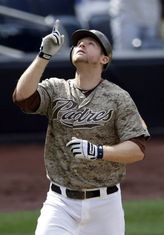 Albert Pujols and…Chase Headley? That’s right, Chase Headley, the San Diego Padres third sacker, has had a very similar, if not better, 2012 campaign as $240 million man Albert Pujols. Playing in the NL West, where most of the spotlight is put on the big market Giants and Dodgers, it is difficult for a guy like Headley to receive the recognition he deserves. Even after getting hot post-all-star break, his Padres sit in 4th place and out of the playoff picture. Despite his team’s struggles, Chase has blossomed into a star; putting together a fantastic season with a stat line of .282/.371/.489/ with 29 long balls and a national league leading 108 runs batted in. Just to give an idea of how productive that is, Albert Pujols has posted these numbers: .286/.342/.522 with 30 round trippers and 101 RBI. Other eye-popping similarities between the two are found in offensive categories such as runs (Headley 86, Pujols 81), hits (Headley 160, Pujols 160), WAR (Headley 5.2, Pujols 4.6) OPS (Headley .860, Pujols .865) and OPS+ (Headley 137, Pujols 136). One problem Headley does run into is striking out. He has whiffed 151 times compared to Pujols’ 68. However, on a more positive note for Headley, he has only grounded into 7 double plays while Pujols has bounced into 18 “rally killers.”
To make this season even more impressive for Headley, he has done his damage in Petco Park, the ultimate nightmare for a hitter. In terms of runs scored per game, Petco is the 6th worst park to hit in during the 2012 season and has the third lowest home run rate in all of baseball. In 2012, Headley is hitting a very respectable .265/.350/.434 in Petco Park. Of course this means Headley has been great on the road, with 18 of his 29 bombs coming away from San Diego along with improvements in nearly all offensive categories. In addition, the lineup around him is not exactly a run-producing machine and lacks power and on base skills, further proving his production is not an illusion. Aside from Headley, only one other player on the team has double-digit home runs (Carlos Quentin 16). All in all, look for Chase Headley to potentially win a silver slugger in the National League at third base for the 2012 season.
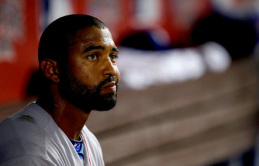 The Dodger fan base exploded with excitement this summer, as one might expect, when former all-stars such as Shane Victorino, Hanely Ramirez and Adrian Gonzalez were thrown into a lineup that already included Matt Kemp and Andre Ethier. People around the baseball world expected this offense to take off and propel the Dodgers to a division title in the NL West, despite absorbing over $260 million in the Red Sox mega-trade. However, the exact opposite became the reality. Since the trade (August 25), the Dodgers have gone 9-16 and were only two games back, while the Giants took off, culminating in winning another division title. This is just a simple case of guys underachieving, not performing, and not living up to expectations. Let’s start at the top, with Shane Victorino slotted into the leadoff spot in the LA lineup. The Dodgers were in desperate need of a leadoff guy, as Dee Gordon just simply wasn’t getting the job done despite his incredible speed. Victorino has posted just a .225/.298/.303 slash line, which is well below his career averages of .274/.340/.428. The former all-star center fielder also owns an OPS+ of just 67, very much below league average (100) and his career mark (101). He does have 13 steals in 44 Dodger games, but Don Mattingly has not been able to use those wheels as often as he would have liked. He also has a WAR of just 0.6 in his time with the Dodgers. Now onto the man who was " born" to hit at Fenway Park with his sweet left-handed stroke. However, his time in Boston was surprisingly cut about 6 years earlier than most expected. Gonzalez’s production has significantly declined, especially in Los Angeles. Normally a patient hitter who gets on base at a superb rate(.370 career OBP), Gonzalez has boasted just a .302 OBP in 116 plate appearances with the Dodgers to go along with a dreadful .245 batting average. Also, the pop in Adrian’s bat has seemingly disappeared. He has just 1 home run with the Dodgers, which ironically came in his very first at bat in blue. Yet, he has not left the yard in his last 115 plate appearances. Despite a small sample size, all the offensive numbers are down for Gonzalez. His slugging percentage sits at .368 (.505 career) and his OPS+ is 84 (136 career). Hanley Ramirez, another big acquisition by LA, has struggled mightily the past 3 seasons. He has shown decent production (10 HR 42 RBI in 54 games) in his time with LA. However, he is still not hitting for average and not getting on base enough. His slash line with the Dodgers (.257/.310/.458) is well below his career averages (.298/.371/.496). As mentioned, the power has been pretty good, however he is also striking out a lot more than he should, averaging 1 K per game (54). He also has only walked 15 times in 232 plate appearances. Collectively, these 3 players have produced much less than expected at the time of their arrivals. The other 2 full-time Dodger superstars mentioned (Matt Kemp and Andre Ethier) have also slumped for the entire month of September. Kemp, last year’s MVP runner-up to Ryan Braun, has battled continuous hamstring injuries all season long. In a season that started out with great promise (was hitting .417/.490/.893!! with 12 HR and 25 RBI in April alone) for Kemp is going to culminate with his worst month of the year. His performance this September has been downright awful (.186/.230/.300). Those numbers are not close to what Kemp is capable of and he has also hit just 2 home runs in 74 September plate appearances. August wasn’t much better in the power department for Kemp, hitting just 2 long balls in 110 plate appearances, with before coming prior to the acquisition of Gonzalez. Therefore, the 3-4 hitters in the Dodger lineup (Gonzalez and Kemp) have combined to hit 3 home runs since Gonzalez was added to the roster, and just 2 in the month of September. In addition, Andre Ethier has also been below average in September, posting just a .304 OBP (his worst of any month in 2012). In the end, this Dodger offense has sputtered when it was expected to turn into a juggernaut. This is a huge reason why the Dodgers completely fell out of the NL West race and sit 3.5 games behind the second wild card spot with 10 games to play. The pitching staff for LA has been pretty good. As a team staff they are third in the NL in ERA, second in Batting Average Against, and fifth in WHIP. Clayton Kershaw is still a dominant ace and Cy Young candidate to go along with a strong bullpen lead by the trio of Ronald Belisario, Kenley Jansen, and Brandon League. It is the Dodger offense to blame in the stretch run of 2012.
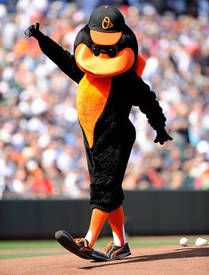 All the hops and “chops,” if you will, seem to have been going the Baltimore Orioles way all season long in 2012. As the summer came, the question around baseball seemed to be, when will the Orioles fade away? Now, in late September, with Buck Showalter’s squad right in the thick of a pennant race, the question seems to have shifted to, how have they been able to get it done? They sit just one game behind the Yankees and currently lead the wild card standings. The Orioles lack a superstar player, maybe with the one exception being Adam Jones (.288/.338/.502 31HR 79 RBI). Other than the former Mariner, the O’s do not have a player batting over .261. They have had to mix and match all year long, especially when trying to discover a productive leadoff hitter. Right as Nick Markakis looked to be the guy for the job, he went down with a season-ending injury. Before Markakis, the leadoff spot was a huge disappointment. In mid-July, the Orioles leadoff hitters collectively had an on-base percentage (OBP) of .264 (Chavez, Andino, Roberts, Avery, Reimold, Flaherty all being used in this capacity). That is an ugly stat for any spot in the batting order, let alone leadoff. Finally, as Markakis settled into the role (.363 OBP at time of injury), he went down with a gruesome hand injury. However, like their rival in the pinstripes, the Orioles have gotten great power production from guys all over the place. They currently are third in the American League in home runs as a team with 192. Meanwhile, unlike the Bronx Bombers, the Orioles lack a legitimate ace in their rotation. They have had 12 different pitchers start a game in 2012. Other than Wei-Yin Chen (30 starts), nobody has started more than 20 games. Also other than Chen, nobody has tossed more than 128 innings. Of all 12 pitchers to make a start this year, 5 have compiled an ERA over 5. With all the innings and games thrown by Chen, he has been very average this season (3.98 ERA, 105 ERA+). Jason Hammel, Miguel Gonzalez, and Chris Tillman have all enjoyed some success (3.43 ERA 122 ERA+, 3.52 ERA 119 ERA+, 3.22 ERA 130 ERA+, respectively). Of course, the problem here is injuries and not enough innings, which has led to bad outings from other guys. This Oriole team is also 12th in the American League in defense, committing 99 errors. The O’s are in the middle or bottom or the pack in a lot of important pitching and offensive stats. They are 8th in ERA and Batting Average Against as a staff. They are 11th in OBP, 6th in AVG, and 7th in runs scored. With these numbers, how can they possibly be keeping pace with a team like the New York Yankees? There are a few possible answers to this puzzling question. The most underrated part of a 25-man roster, the bullpen, for this team has been lights-out all season. Of relievers with more than 36 innings pitched, only one guy (Kevin Gregg) owns an ERA of over 3. These guys include Jim Johnson (2.69), Luis Ayala (2.69), Darren O’Day (2.37), Pedro Strop (2.26), Troy Patton (2.58), and Matt Lindstrom (2.72). With the mighty struggles of the starters at times, and the fact the only 1 starter has thrown a complete game this season, the bullpen has been nothing short of excellent. Looking back, playoff teams and World Series winners always seem to have a strong bullpen (i.e. 2011 St. Louis Cardinals, 2009 New York Yankees). And as if it could not be any better, they just called up the best pitching prospect in baseball equipped with this insane pitch (45 second mark). Another startling stat is the Orioles record in one-run games and extra-inning games. These stats could be lucky or just coincidental, but I like to call them clutch. They are 27-8 in one-run games and 16-2 in extra innings. Dan Duquette and Buck Showalter have done a magnificent job with this team in 2012. Duquette has taken some chances and been very aggressive in making low-risk moves throughout the season. He has picked up guys like Nate McClouth, Lew Ford, Joe Saunders, Randy Wolf, etc. These guys are not big names, and some may have even been completely forgotten about by the baseball world (looking at you Lew Ford), but they have made contributions to help the team win. One last interesting stat belongs to Taylor Teagarden. In just 50 at bats he has 7 hits, good for a .140 batting average. Nothing special right? Of the 7 hits, he has 3 doubles, 2 home runs and 8 runs batted in. That’s the kind of season it has been for this club. A season filled with clutch performances and excitement. Look for the Baltimore Orioles to " Buckle Up" this October and make some noise for the first time since 1997.
|







 RSS Feed
RSS Feed